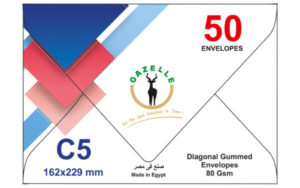On an ordinary day, I came across a post that left me bewildered and opened many avenues for me to think and research. I am sure you will be equally surprised by the following passage.
“The envelope is now 200 years old…According to all sources, the inventor of today’s envelope is British paper merchant K.S. Brewer from Brighton. In 1820, he sold the first envelopes. He cut every single envelope using a template and a shoemaker’s knife. His envelopes quickly became famous because of their uniform shape and easy handling.”
The envelope is only 200 years old? What did people use before envelopes? How were the letters sent, and how were their contents kept safe from the prying eyes? I mean letters in olden times used to carry confidential content. It all sounds so crazy–eh?
A little peek into the history tells us that envelopes were considered pieces of paper that were properly folded and glued. They were made by hand before machines were introduced for mass production.
The curious me wanted to know more about the time before the advent of envelopes. So here is what I found out. I am sure you are by now curious too.
Although many would still believe envelopes and snail mail to be an ancient mode of sending mails, however; despite the speediness and digital mails, the traditional mailing system has seen a resurgence owing to the increased return on investment.
Letterlocking—what is it and how is it done?
Samuel Morland, a British spymaster boasts to be an expert at unfolding and folding letters. Now, this may make you wonder, what is so artful in that? Even a five-year-old can do that! A deeper dig into ancient times tells us that in the 1600s the letters were very different from what we have today. Since there were no envelopes, the letters were folded in a way to serve as their own envelope. This process is called letter locking. Letterlocks could be simple, just a series of quick folds without any sort of glue or tape. However, they could also be incredibly complex, even booby-trapped to reveal evidence of tampering.
So, now this clarifies Morland’s braggadocio. He meant he could unfold and then refold the complex folding techniques. Letters were folded, had slits and wax seals to protect their content.
Doesn’t this make you wonder that why no one talks about letter locking? It was an art that has died! Well, maybe due to its ubiquity, it was never documented or thought important enough.
Fact: AROUND 2 A.M. on February 8, 1587, Mary Queen of Scots wrote a letter to her brother-in-law, King Henri III of France. It was her last. Six hours later, she was beheaded for treason by order of her cousin, Elizabeth I of England. The letter has since become one of Scotland’s most beloved artifacts, the handwritten pages offering a poignant glimpse of a monarch’s politics with her impending execution. The Queen used “Butterfly lock” to keep her missive hidden from curious eyes.
Our opinion:
Letter locking is an art in itself that needs thorough research and learning to understand.
On the other hand, the digital world has created new opportunities for entrepreneurs and small businesses many of which have been of great benefit to the envelope industry. The last 10 years have seen an increase in the custom greeting card and announcement companies. Moreover, the enormous number of products that are sold from websites are shipped in packagings like bubble envelopes and mailers of the sort that Impala paper prints.
Now you know where to reach out for all your envelope needs.



Recent Comments